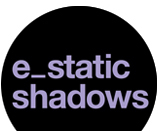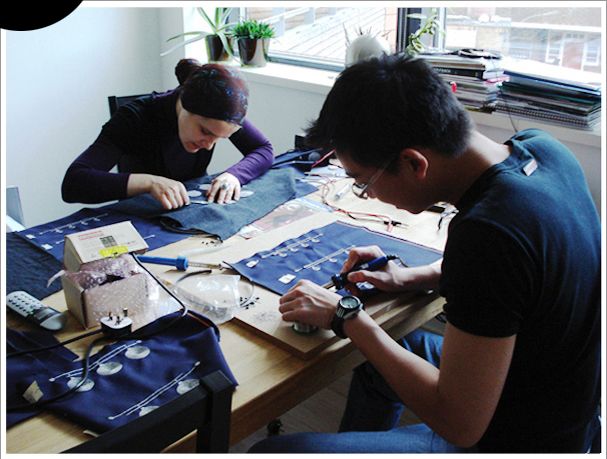

The project is hosted by:

The project is funded by:


The project is sponsored by:


The project is supported by:

![]()

The project 'E-Static Shadows' is a practise-based experimental research project by designer Dr. Zane Berzina and architect Jackson Tan which creatively explores the speculative and poetic potential of static electricity found in our everyday environments, surrounding our everyday interactions. The aim of the project is to investigate how electrostatic energy could either be effectively utilised or play a part in the development of active, responsive and interactive textile systems which would be capable of detecting, translating and displaying this energy into dynamic audio-visual patterns. This design pilot project studies the possible translations of electrostatic energy into other types of energy such as light, sound and motion using specially engineered intelligent textile systems as mediators and displays for these processes.
The focus of the proposed project is held on the synthesis between the creative approach to textile practice and technical innovations in electronics, soft circuitry and new materials in order to create sensory environments that actively respond to electrostatic fields generated by human interactions. The research project deals with issues across the fields of art, design, craft, sound, technology and material science researching and addressing the positive and playful potential of static electricity. The underlining intention is to research how the easily accessible but little utilised phenomena of electrostatic can add to our sensory experiences, advance the design knowledge of interactive environments and eventually improve our quality of life. This provides opportunities for new speculations regarding the role of static electricity within a built environment.
Electrostatic energy is an essentially regenerative energy. Therefore, to some extent, this project also explores the potential of the electrostatic energy as a certain type of renewable energy that, under circumstances, can easily be generated virtually when and where desired. Eventually this interrogation could lead to interesting uses of this energy not only in an interactive art and design context but also in other fields such as architecture or in the development of new technologies and processes.